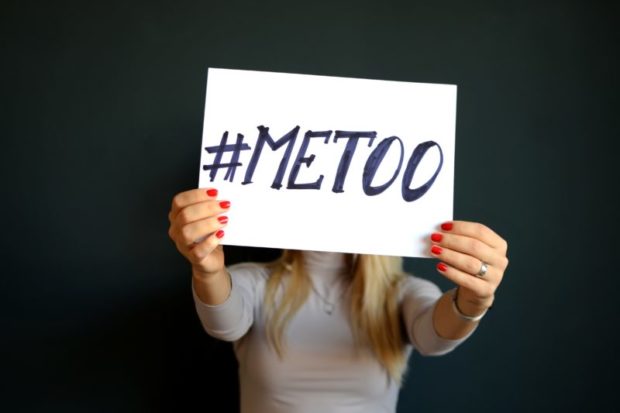Dealing with Workplace Harassment – A Simpler Approach

It is no revelation that workplace culture needs a facelift given the infuriating world of sexual harassment and workplace improprieties by supervisors, CEOs, and power-trippers. As many states are implementing new laws regarding workplace harassment as part of the #MeToo movement, companies have the opportunity to pivot from the traditional measures of addressing these issues by really changing and emphasizing a corporate culture that goes beyond the notions of handbooks and training seminars. If done efficiently and effectively, the outcomes will increase the bottom line and ensure that the company stays out of the headlines.
To truly cleanse a workplace culture and create one of inclusion, diversity and common good, employers must implore new approaches to resolve and prevent sexual harassment incidences. This includes removing themselves from the investigation process and the fear associated with reporting harassment. Only then can the necessary shift exemplified from the C-suite propel a company forward and better equip themselves to handle such issues.
Current System is Inoperative
The historical treatment of sexual harassment has routinely been dealt with by training seminars and handbook policies that did not directly address the core issue or take matters seriously. Remember, sexual harassment is not simply about sex. It is often a tool wielded to assert power and dominance over another person. As such, training videos had little impact in resolving the harassment issues. If anything, training was provided to allow employers the opportunity to say that they took harassment seriously – when recent evidence points to the opposite.
When it came to handbooks or policies related to harassment, most employers had language providing that if any harassment should occur, the employee needed to report the incident to their supervisor or human resources department. Is this the right approach? Absolutely not, given the fact that a majority of the harassment is done by a supervisor or someone in power over a subordinate. Having a platform or policy set up in this manner makes reporting unreasonable and has caused this “fear” of reporting to percolate under the rugs of corporate America.

Outside of training seminars and toothless harassment policies requiring reporting to supervisors, employers used a different tool with anonymous hotlines or 1-800 numbers. Although originally designed to help with reporting harassment or removing the “fear” of reporting, in reality these hotlines just send the reports back to the human resource department or supervisors.
As reported by the EEOC, training or harassment policies are less probable to have a significant impact on changing employees’ attitudes, and may even have the opposite effect. With this, the EEOC further reports that approximately 90% of sexual harassment goes unreported, despite a 50% increase in legal suits filed. Employers need to turn to other measured approaches to clean up their culture and prevent costly claims and scandals.
The Solution
To truly address the cultural issues feeding the harassment environment of corporate America, two things must occur. First, the fear of reporting must be removed. Second, the employer must be eradicated from the handling, intake and investigation process. Instead of focusing on compliance or claim prevention, employers should strive to create a culture of inclusiveness and diversity grounded in mutual respect. The benefits are undeniable and well-rooted. Employers with positive cultures experience increased productivity, lower turnover and absenteeism, as well as healthier employees due to the decreased stress and physical tolls that harassment causes. Take all of this together and a company increases the bottom line – all due to a culture shift!
A Simple Approach – Implement Third-Party Reporting & Investigation
A simple solution is to implement an efficient and effective platform that allows for reporting to a third party, and having that outside party handle the complete investigation on behalf of the employer. By removing the employer from investigations, companies are able to subsequently remove the fear, which clears the path for a culture of respect and inclusion. Does this mean there will be zero issues? No. There will always be those “bad” hires. But having a culture of respect will make sure that those bad hires do not drive company profits down by running away valuable employees and harming company culture. Furthermore, this inherently creates a culture of equality and civility. This solution is at the fingertips of so many employers. Here are some tips to implement it successfully.

Buy-In From Leadership
To remove the fear of reporting, which is the foundation of creating this culture of civility, executive leadership must display support and encouragement for the change. If this does not occur, change will not happen and those in leadership are more susceptible to being tomorrow’s headline.
Culture Audit
To understand where the culture is today and what is needed for improvement, employers can implement an anonynous corporate culture audit. This exhibits to employees that executive leaders and management care about the safety and well-being of all employees.
Spotlight on Good Behaviors
Focusing solely on inappropriate behavior may make employees defensive. To encourage a culture shift, executives should talk about and highligh good behavior that positively impacts actions of the workforce and sets expectations of what is appropriate. It’s very similar to how we are as parents. If you only focus on negative behavior, without highlighting positive actions, the children grow up scared of what not to do, as opposed to knowing what to do. The same is true with workplace harassment.
This guest post was authored by Jared Pope

Jared S. Pope is the Founder and CEO of Work Shield, which provides an innovative platform to help employers solve and address workplace harassment issues. By providing the Employer Harassment Protection Plan, Work Shield helps employers build inclusive cultures by removing the employer from handling the investigative process and removing the fear of reporting by employees. Jared is also an experienced ERISA, HR and Benefits attorney and entrepreneur who focuses on efficient, simplified business solutions.


